
Solar inverters are an essential part of every solar power setup. They’re responsible for converting the DC electricity produced by solar panels into the AC electricity that most home appliances use.
Since solar inverters are so critical, it’s important to get the right one. That’s why we looked at more than 20 different inverter models to come up with the 9 best solar inverters. It was hard to choose, but we think the AIMS Power 6000W Pure Sine Inverter Charger is the overall best solar inverter on the market today. We also reviewed seven other popular inverters to help you find the one that’s best suited for your needs.
Choosing the top solar power inverters required considering several different features. We first looked at what style each inverter model is, since this impacts efficiency and cost. We also considered output wattage and input voltage, which determines how you can use your inverter. Finally, we looked at factors like efficiency, ease of installation, and cost. You’ll find reviews of each of our top solar inverters below. Keep reading for our buying guide, which explains everything you need to know about choosing the best solar power inverter for your solar array.
The AIMS Power 6,000-watt solar inverter is our favorite model on the market right now. It is incredibly flexible, with an input voltage range from 45 to 63 volts DC and a standard 120-volt output. Users especially appreciate that the built-in 60-amp battery charger is able to work with eight common battery technologies, including lithium-ion batteries. Plus, you can fully customize your solar and electrical system with this inverter since it can be switched between 50 Hz and 60 Hz outputs to adapt to any international electrical standard.
The inverter is generously equipped with safety and performance features as well. It will automatically alarm when the inverter or battery are overloaded or when the battery begins to overheat. It also has automatic short-circuit prevention and a built-in cooling fan to prevent overheating in the first place.
What impressed users most of all is the surge wattage this inverter delivers. The AIMS Power inverter is rated to pump out up to 20,000 watts from your battery over a 20-second period. In practical terms, that means you won’t have any problems starting up a massive refrigerator or freezer with this inverter controlling your power delivery.
The only downside we can see to this unit is that it doesn’t have any electrical outlets built into the inverter itself. That’s hardly a dealbreaker for the vast majority of users, though, and it’s fairly straightforward to wire your own appliance outlet from the inverter’s breaker panel.
This pure sine wave inverter from Sungold Power is one of the best solar inverters for home use. It includes a few handy features that make managing your solar installation and balancing loads across your system significantly easier.
To start, the inverter can be switched between AC and battery priority. When in AC priority mode, the inverter will automatically draw power from the grid and use it to charge your battery. In battery priority mode, the inverter will continue drawing solar power from your battery even if a grid connection is available.
Users also liked that the inverter can auto-start a generator when the battery charge runs low. This is handy when you’re not always monitoring your solar system, since it ensures that the battery won’t be fully drained and then unable to recharge from your panel array.
While the inverter is rated for up to 6,000 watts of continuous output, it’s rated for an input voltage of just 24 volts. That may be a bit of a mismatch for some home solar systems, but it also provides a good alternative to the similarly designed 48-volt inverter produced by AIM Power.
Even better, users point out that this is one of the only split-phase inverters on the market that doesn’t cost a fortune. This means the inverter is able to connect to inputs with two different voltages – for example, your solar panel array and the electrical grid.
This small but capable solar power inverter from Outback Power is designed for modular solar systems or for use as a microinverter. In three-phase mode, when the grid isn’t connected, you can combine up to nine of these inverters to increase your total power output. With a grid tie-in, you can combine up to 10 modules. VFXR3648A inverters are stackable on top of one another, making it convenient to expand your system as new power demands arise.
If you are interested in combining multiple inverters, efficiency will be extremely important since any losses multiply. Thankfully, the VFXR3648A has a nominal efficiency of around 93% – that’s not as high as some of the larger inverters we’ve seen, but it’s pretty good. When you consider how small and lightweight these inverters are, the efficiency is downright impressive.
It’s important to note, though, that this unit isn’t designed for user-friendliness on its own. It doesn’t include a built-in inverter controller – you have to purchase that separately from Outback Power – so you can easily turn the unit on or off or program it for charging modes. In fact, without a controller, you’ll need wire in an on/off switch yourself to have the option to stop the flow of power. With the MATE3S controller that Outback Power makes, however, you’re able to customize this inverter between seven different modes and hook it up to auto-start a generator when your power runs low.
This flexible solar power inverter from Fronius is designed to let you set up your solar system any way you like while offering unparalleled monitoring capabilities. The inverter is built with WLAN and Ethernet ports so that you can monitor the performance of your solar system from inside your home or anywhere in the world. That includes monitoring the input voltage from your panels, the output voltage from the inverter, and any strain being placed on the battery.
One of the neat things about this inverter is its so-called Superflex Design. Every DC input is able to handle the entire 370-volt input of the unit. That means that you can spread your inputs across multiple solar panels, or connect a single large array that’s hard-wired together. This flexibility is particularly nice for larger roof systems where you might have several clusters of panels, each with its own power optimizers.
Users also appreciate that the Fronius inverter is ready for use with smart grid systems. The inverter can be programmed with feed-in limits imposed by your utility, as well as easily balance loads between home power consumption and returning electricity to the grid. Importantly, it comes with arc fault circuit interruption integration, which ensures that the inverter is up to the most stringent regulatory standards in effect in some US power districts.
This compact and relatively inexpensive inverter from Samlex America can’t compete with the other inverters we reviewed on wattage. However, for low-wattage solar systems, you simply can’t beat the reliability of this unit. The 2,000 continuous wattage and 3,500 surge wattage ratings are very conservative based on user tests, meaning you can be confident that you won’t experience any issues when running this inverter at full load.
The 12-volt input rating is also a plus for smaller solar systems or off-grid solar installations. That’s the wattage that most individual solar panels and small, consumer-friendly batteries are running at after all. So, it should come as little surprise that this inverter is widely praised among RV and boat owners who need a system that can operate seamlessly away from the electrical grid. It certainly doesn’t hurt that the inverter has a built-in panel containing two 120-volt AC outlets so that you can easily connect appliances directly into the inverter.
The only other thing we’d like to see from this inverter is slightly higher efficiency. When you’re only working with one or two solar panels, every watt matters. Unfortunately, this inverter loses around 15% of your available power during conversion. Some of this is to run the built-in fan, but that’s still a notable power loss. However, given the budget-friendly cost of this inverter, most users didn’t mind the less than stellar efficiency.
This budget power inverter from WZRELB is one of the best inverters for off-grid solar systems. It’s cheap, compact, and lightweight. Plus, it’s designed to take a 12-volt input voltage – the voltage that installations with just one or two small solar panels produces.
An LCD display and simple on/off switch make this inverter extremely easy to use and help conserve battery power when you don’t need electricity. The display lets you monitor the input and output voltages, which helps ensure that the system isn’t being overloaded or overdrawn. There’s also a low-voltage alarm, which sounds as 11.2 volts, and a low-voltage shutoff that kicks in when your solar panels deliver less than 10 volts.
For how inexpensive this inverter is, users were also impressed with its efficiency. The unit is rated to convert up to 90% of available power when running close to its 3,000-watt capacity. Plus, it’s capable of surging up to 6,000 watts when needed, which is more than enough power for most refrigerators, freezers, and air conditioning systems. Importantly, the inverter puts out a pure sign wave with relatively little harmonic distortion, so it’s safe to use with your laptop and other sensitive electronic devices.
The biggest downside to this inverter is the short warranty period. Given the price, though, a one-year warranty seems fair. Users haven’t reported any issues with the inverter, which speaks to the quality of this product despite the budget price tag.
If you’re thinking about feeding power back into the grid to get paid for your power, this solar inverter from Outback Power is the best option on the market. It’s a hybrid all-in-one management system that enables you to program it to balance power between your home and the grid.
Depending on how you want to use your power, you can balance the load between the 120-volt and 240-volt outputs. You can even stagger your energy delivery to the grid around peak demand to get the most money for the electricity your panels are producing.
The maximum efficiency of this inverter is also mind-blowing. When running at its rated 5,000 watts, the inverter turns fully 97% of the incoming power into usable AC electricity. That’s an efficiency that few other inverters we’ve seen can rival. It’s also worth noting that this inverter is compatible with a wide variety of battery types, including lithium-ion batteries.
Of course, this utility comes at a steep cost. The Outback Power inverter is one of the more expensive models available for home and small commercial solar installations. But, when you put that cost in perspective with the five-year warranty and the ability to generate revenue from your electricity utility, it’s far from outrageous.
SMA is a renowned German solar company popular for its reliable inverters. The brand has been superior for quite a while as it is one of the pioneers in the inverter market. The Sunny Boy 3.0 is one of their top-selling residential single-phase inverters lines. It is incredibly lightweight, sleek, and efficient. It is a perfect option for solar power generation in private homes as it is easy to install and commission.
The Sunny Boy 3.0 is our best solar grid tie inverter because of its convenient and future-proof design. With the inverter, all PV operators and installers remain updated. Plus, the current communication standards allow the addition of intelligent energy management and SMA storage solutions at any time. Moreover, SMA offers free and automatic inverter monitoring to help you, the installer, provide quick, targeted service to your customers. Should the inverter fail, you will get information regarding the downtime from SMA and a replacement device free of charge if necessary.
The Sunny Boy 3.0 grid-tie inverter compares favorably with other inverters on this list regarding easy installation and commissioning. As it is a secure plug-n-play unit, you can quickly install it without opening it. The inverter is also relatively compact and lightweight, coming in at 57 pounds.
This grid-tie inverter from SMA is one of the most efficient and modern inverter units we’ve seen. It offers a flexible system design, with built-in power optimization to ensure that a single shaded panel doesn’t overly impact the performance of your solar array. On top of that, the efficiency is nothing short of incredible. This inverter squeezes up to 97.6% of the available DC power into AC electricity when running close to its full 5,000-watt capacity.
Most users are likely to use this inverter to sell electricity back to the grid. however, it’s not limited to this use. The inverter is fully islanded so that you can capture up to 2,000 watts of electricity for your home when the grid goes down. (Note that you need Sunny Boy’s Secure Power Supply, sold separately, to enable this functionality.) Plus, if your utility doesn’t buy back electricity from homeowners, you can program the inverter not to export any power to an available grid connection. Just note that the Sunny Boy doesn’t work with a battery connection, so it’s not the best option for fully off-grid applications.
The biggest issue with this grid-tie inverter is that it may simply be too large for many residential solar systems. It’s capable of taking in up to 550 volts, which is a massive amount of power. If your solar system produces significantly less power than this, you’ll lose a lot of the efficiency benefits that this inverter provides.
Now that you’ve learned more about our eight favorite solar inverters on the market, how do you decide which one is right for you? Every solar installation is slightly different, so it’s essential to get the right inverter to maximize your system’s efficiency while minimizing costs. In our buying guide, we’ll take a look at everything you need to know about solar inverters.
Solar inverters can be classified into four groups.
Stand-alone inverters are designed to draw energy from a DC battery, which in turn is charged by the solar panels. The WZRELB, Sungold Power, and AIMS Power inverters are all examples of stand-alone inverters. Many stand-alone models come with a battery charging model, which you can use to replenish a dead battery using AC power. Stand-alone inverters don’t interface at all with the utility grid.
Grid-tie inverters are designed to connect your solar installation to the electrical grid. They’re a good option if you want to sell your excess power to a utility company. But, for safety reasons, grid-tie inverters shut down when the grid goes offline – so you won’t be able to draw power from your panels for use in your home during an outage.
Battery backup inverters are an alternative to grid-tie inverters. They draw energy from a battery and can manage charge via an onboard module. You can use some of the energy for your home and export any excess to the grid.
When the power goes out, you’ll still be able to use power inside your home even though the grid connection will be shut down.
Intelligent hybrid inverters are the modern, do-it-all class of solar power inverters. Models like the Outback Power SkyBox are able to manage the power in your battery and send it to your home or the grid on an as-needed basis. They can also pull power from your home or the grid to keep the charge of your battery managed to get the longest battery life.
There are two different types of solar inverters available: string inverters and microinverters.
String inverters, also known as centralized inverters, connect all your solar panels in series. In this case, your system is only as productive as your least productive panel. So, if you have a single panel that gets some shade, it can bring down the efficiency of your entire solar system. The advantage of string inverters is that they are relatively inexpensive for many rooftop solar systems.
Microinverters get around the problem of individual panel performance. With microinverters, each solar panel gets its own small power inverter. If one panel is shaded or underperforming, it won’t affect the performance of your entire system by very much. Microinverters also enable you to directly track the performance of individual solar panels, rather than just the system as a whole. The downside to microinverters is that, since you need one for each solar panel, costs can add up very quickly.
With those important differences between inverter types in mind, let’s take a closer look at some of the features you should look out for that vary between models.
Solar inverters are generally rated according to the amount of power they can put out continuously. In general, you want to have a rating that is at least equivalent to the wattage output of your solar panel array. However, don’t get an inverter that’s much larger, or else the efficiency of your installation will begin to drop.
It’s also worth considering the surge power rating of your inverter. This is the amount of power that your solar inverter can put out for a few seconds at a time.
Surge power comes into play when you want to start up motor-driven appliances like a refrigerator, which momentarily draw much more power than they do continuously once running.
The input voltage of your inverter must match the voltage of your solar panels and battery bank. Many inverters accept a range of input voltages, so there’s some flexibility built into the system. For example, our Editor’s Choice inverter from AIMS Power works with solar panels ranging from 45–63 volts.
Note that in most cases, the input voltage is roughly matched to the power rating of the inverter. An inverter with less output wattage will have a smaller input voltage, since it is presumably being used in conjunction with a smaller solar system.
Solar inverters typically put out power at 120 volts, 240 volts, or both. This is important because it determines how your inverter will need to be connected to your home and whether it will be compatible with the grid. The grid generally operates at 240 volts at the point where it meets your home, but most of the outlets in your home put out 120 volts because this is what most appliances use.
So, a 120-volt inverter may be better suited if you primarily plan to use your solar array to power home appliances. A 240-volt inverter, like those from SMA, Fronius, and Outback Power, may be better suited for tying into the electrical grid to sell power.
A solar inverter’s efficiency describes how much power is lost during the conversion from DC to AC power. An inverter will approach its maximum rated efficiency when you are drawing close to its maximum rated output.
Modern solar inverters are all very efficient, but there’s still a lot of variation between specific models. For example, the AIMS Power and Sungold Power inverters each have a maximum efficiency of 88%, while the Outback Power and Fronius inverters can perform at up to 97% efficiency. All of the inverters we reviewed are capable of efficiencies of at least 85% or higher.
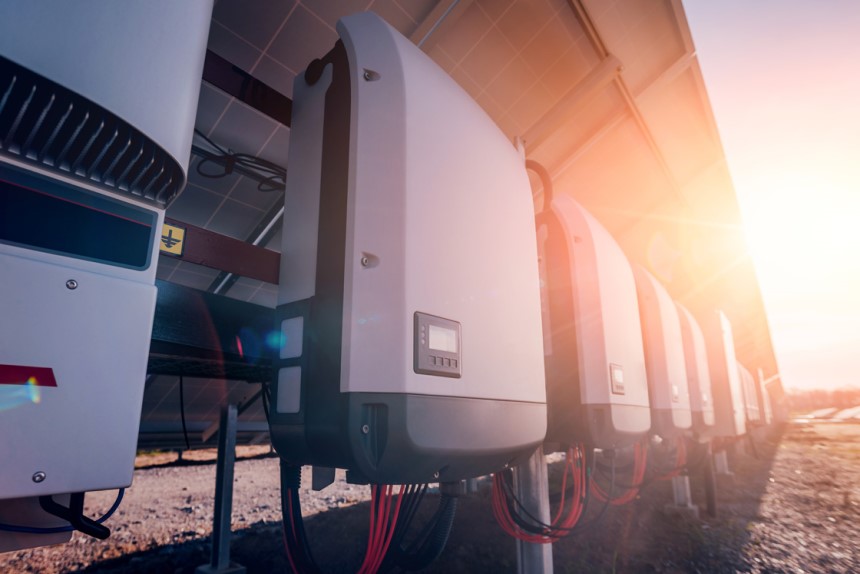
As with any electrical device, safety is extremely important. With solar inverters, the main danger isn’t electrocution, but rather overheating and overcharging. Many of the solar inverters we reviewed have built-in mechanisms for sensing the battery temperature to prevent overheating. Some models, like the one from Sungold Power, have alarms for battery overcharging or undercharging to help you monitor power imbalances. While safety features aren’t always exciting, they’re important for prolonging the life of your solar system.
Our three overall favorite solar inverters on the market today are the AIMS Power 6000W Pure Sine Inverter Charger, the Outback Power SkyBox Grid-Tie Hybrid Inverter, and the Sungold Power 6000W APC Series Inverter.
The Sungold Power and AIMS Power inverters are similar in their construction, purpose, and wattage output. But, where the AIMS Power works with 48-volt systems, the Sungold Power inverter is designed for 24-volt systems. The Sungold Power inverter stood out for the fact that it’s a relatively affordable split-phase generator.
We think the AIMS Power 6000W inverter is the best solar inverter for most homeowners. This inverter can be used for an extremely wide variety for 48-volt solar arrays, comes packed with safety features, and offers a whopping 18,000 watts of surge power. All that means that this inverter is flexible enough to work no matter what future changes you make to your solar system.
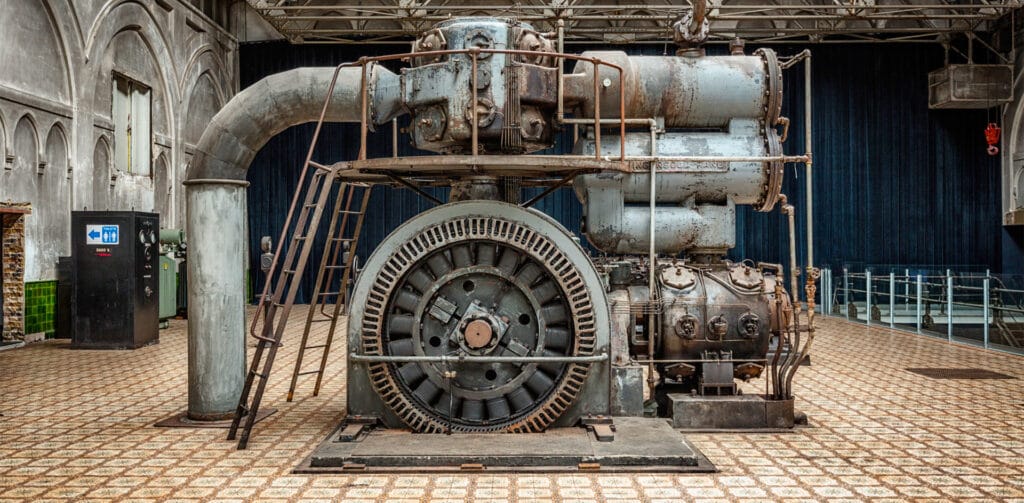
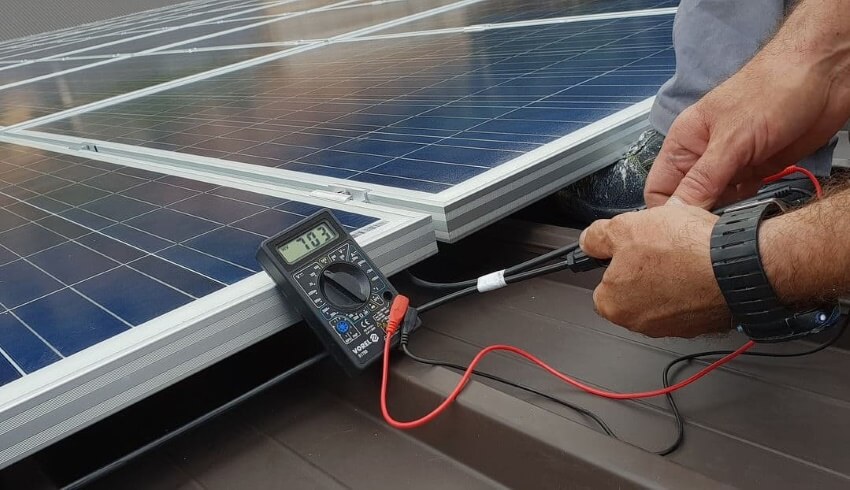
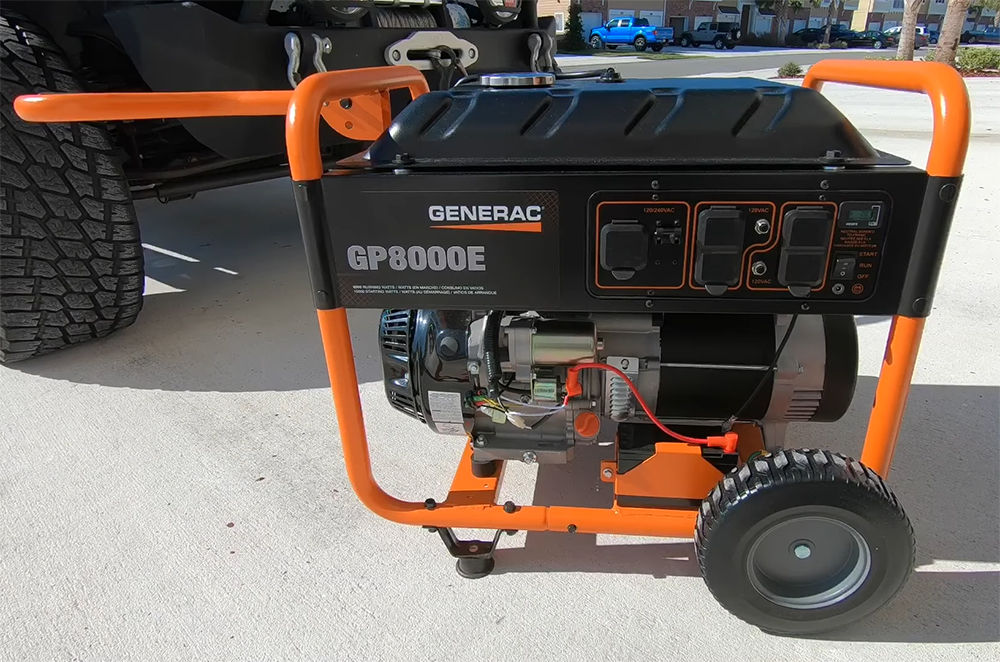
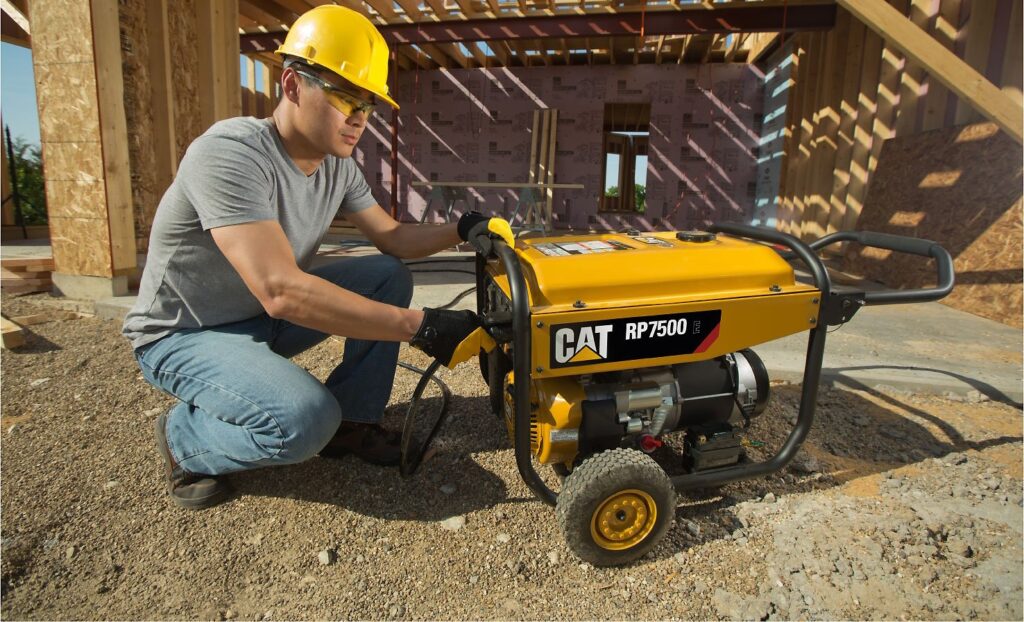

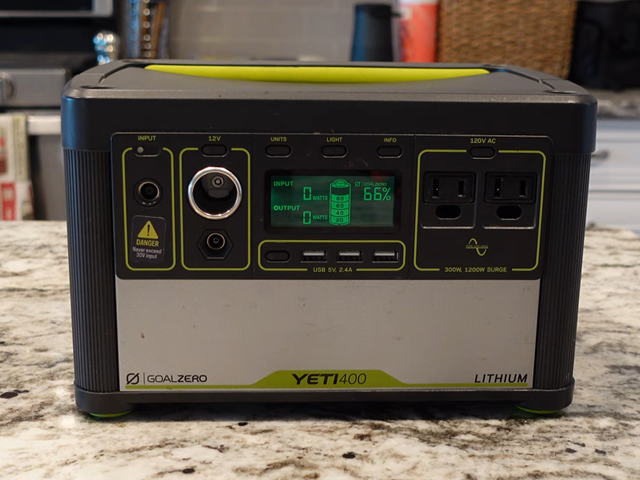
I just moved into a new home. I previously installed solar on my old house myself, using an SMA sunnyboy string inverter and connecting eight modules in series. I need to install solar on the new house; so, I’m inclined to take the same strategy, because I know it well. Would you recommend to switch to a micro-inverter based system? If so, why?
As a person who works for a company that focuses on solar systems repair, i’d recommend microinverters. They can save you a lot of money in the future. If something goes wrong, we’ll have to lift up every panel with a string inverter. With a microinverter, it’s easy to tell if a certain panel is having issues, so it is easier and cheaper to make repairs.
I’d say switch to micro inverters or Solar Edge. Don’t install stringline. It is not as safe as the other two options and costs not much less. Go with either of these two systems, they are both great. SolarEdge has the better monitoring platform by a lot. It makes other systems look like a joke.
I personally don’t like microinverters and SolarEdge. If you install the system on your own, with a string inverter you’ll get much more insight into the system. MLPEs will only give you information through their own online monitoring, which is limited. But you usually do not need much more when it comes to string monitoring. You can add Tigo for module level monitoring, but I have only used that for identifying issues with the module level electronic in the first place.
Hey, do you think it is possible to connect an inverter to solar panels without involving batteries? If yes, how can I do that?
If you are on the grid, there are many inverters that can be used. They are the most common type of system people install but you need to be a licensed solar PV installer if you want to do that yourself. If you want to go off-grid, then there is another type of system that charges batteries and the inverter runs off those. So I am assuming you mean off-grid without batteries. It is possible but you need to be careful about what specifications your inverter has. A grid connect one will not work for this situation because it cannot handle all of the voltage produced by your PV panels. Also, be aware that an off-grid inverter will often disconnect when the PV output drops below the load power. So, this is not a very good idea.
How much does a good solar inverter cost?
You’ll have to pay from $1000 to $1500 for an average-sized build inverter. The cost of an inverter can vary significantly, depending on the installation.
Could anyone clarify what is the difference between a normal solar inverter and a hybrid inverter?
A normal solar inverter converts DC (Direct Current) to AC (Alternating Current). It can only be used as an inverter, not as a charger. A hybrid solar inverter can work in two directions, one as a charger and other as an inverter. This means it can convert DC to AC and in other hand converts AC to DC, but not at the same time.